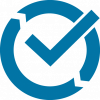Related Content
 |
Continuous Exploratory Testing: Expanding Critical Testing across the Delivery Cycle Continuous testing entails executing automated tests to obtain rapid feedback on business risks. Where does that leave exploratory testing? Obviously, it doesn’t make sense to repeat the same exploratory tests across and beyond a sprint, but exploratory testing can be a continuous part of each software delivery cycle. |
|
 |
Why Smart Testing Requires Strategy and Flexibility You can’t expect to achieve successful testing without the proper strategy, but you also can’t create a strategy that doesn’t allow you to adapt along the way. Think about why you’re testing, and be confident enough to change course if you feel it can benefit your team and project. |
|
 |
5 Tips for Choosing Your First Agile Project When transitioning to agile, applying agile methods to a single project is a great way to get started. However, care must be taken to ensure the project you choose is appropriate—it shouldn't be too large, take too long, or be too risky. Here are five tips to help you pick the right project for your agile pilot. |
|
 |
Driving Continuous Improvement to the Entire Organization In traditional agile approaches, retrospectives are valuable to team improvement. However, when teams encounter organizational issues beyond their control, such as project structure, interorganizational communication, or resources, it's more difficult. Here's how to expand continuous improvement to the whole company. |
|
 |
Why Musicians Can Make for the Best Testers Testers need to be both creative and analytical, and those are two features that are very common in musicians. Sure, it might not be writing code, but we’re learning more and more that the building blocks and innate qualities that make for good testers can be more important than the testing skills themselves. |
|
 |
Integrating Code in Agile Software Development: Start with the Goal in Mind Agile software development works because of continuous feedback at various levels, and the most important form of feedback is working software. One way to achieve rapid feedback is to integrate and deploy code frequently. Rather than starting with the process, first decide what "frequently" should mean for your team. |
|
 |
Using Feature Flags to Boost Testing and Deployment A feature flag is a configuration setting that lets you turn a given feature on or off. There is no need for a feature to be complete before you can start testing—as soon as the first piece of code is merged, you can turn the flag on in your test environment and begin. This also reduces risk. Do you use feature flags? |
|
 |
The Need for Well-Formed, Creative Minds in Software Testing The need for creativity and innovation is felt in the world of software testing more than ever before given how dynamic and fast-paced it has become. With so many changing technologies and a multitude of people to interact with, a tester’s job calls for newer and better ways of accomplishing tasks. |







